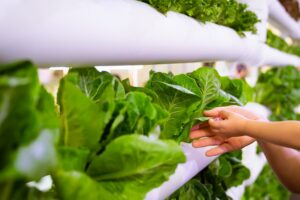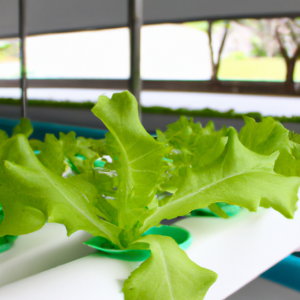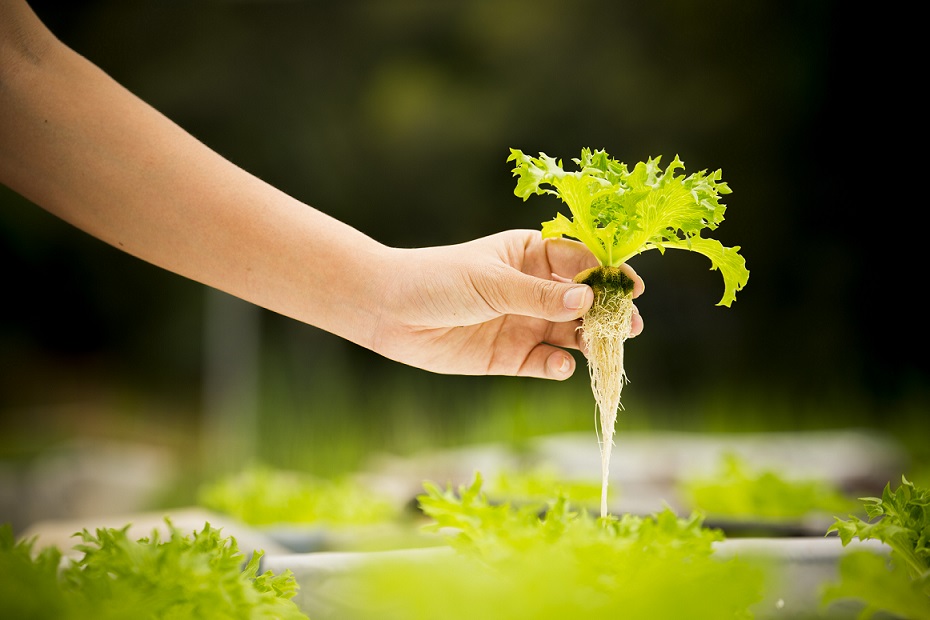Introduction to Hydroponic Gardening:
Gardening is a fulfilling hobby that provides an opportunity to connect with nature and enjoy the fruits of our labor. However, traditional gardening techniques can be a little challenging and restrictive, especially for those who live in small apartments or lack outdoor space. Whether you have a small homestead, or an urban dweller or not, you can still grow your own fresh produce – all you need is some know-how and a hydroponic setup.
For many homesteaders, soil planting is the preferred growing system. With new technologies that are now coming available, hydroponic growing is becoming increasingly popular with homesteading.
 Hydroponics is a soil-free method of growing plants that involves using nutrient-rich water instead. This approach is gaining in popularity due to its numerous benefits, including conserving water, reducing the amount of space needed per plant, eliminating the need for pesticides, and reducing the time and labor involved in gardening.
Hydroponics is a soil-free method of growing plants that involves using nutrient-rich water instead. This approach is gaining in popularity due to its numerous benefits, including conserving water, reducing the amount of space needed per plant, eliminating the need for pesticides, and reducing the time and labor involved in gardening.
If you’re new to hydroponic gardening, here’s a beginner’s guide to get you started on growing green with confidence.
The Benefits of Hydroponic Gardening
Before diving into the specifics of hydroponic gardening, let’s explore some of the benefits this method offers.
One key advantage of hydroponic gardening is the ability to grow more food in smaller spaces. Since plants don’t need soil and have access to all the nutrients they need, they tend to grow faster and healthier. Additionally, hydroponic setups are highly versatile and adaptable, making it possible to grow a wide range of plants all year round, regardless of the weather outside.
Another advantage of hydroponic gardening is water conservation. Traditional gardening consumes a lot of water – it’s estimated that 70% of global freshwater usage goes towards agriculture. In contrast, hydroponic systems use significantly less water and recycle it effectively, making it a more sustainable way to grow plants.
Hydroponic gardening also has the benefit of being pesticide-free. Pests and diseases that typically plague traditional gardens are less of a threat, thanks to the sterile and controlled environment hydroponic systems provide.
The Basics of Hydroponic Gardening
 Now that you understand some of the benefits of hydroponic gardening let’s dive into the specifics of how this method works.
Now that you understand some of the benefits of hydroponic gardening let’s dive into the specifics of how this method works.
Hydroponic gardening involves growing plants in a nutrient-rich water solution that is free from soil. There are several types of hydroponic systems to choose from, but most involve growing plants in containers filled with a growing medium like perlite or coconut coir, which helps anchor the plants and provide support.
The nutrient-rich solution is then pumped into these containers, ensuring that the plants receive all the necessary nutrients for growth. Most hydroponic growers also use pH testing and monitoring equipment to ensure that the solution is at the right acidity levels for optimal plant growth.
What You Need to Get Started
Before you get started with hydroponic gardening, you’ll need to gather some essential materials and equipment. Here’s what you’ll need:
A hydroponic system: There are many types of hydroponic systems to choose from, including deep water culture, drip systems, and aeroponics. The best system for you will depend on your space, skill level, and the plants you plan to grow.
Growing medium: Hydroponic growing mediums help to anchor the plants and provide support. Common options include perlite, coconut coir, and rockwool.
Nutrient solution: A nutrient-rich water solution is essential for hydroponic gardening. You can purchase pre-formulated solutions online or at a hydroponic store, or make your own from scratch.
pH testing equipment: The pH balance of your nutrient solution is essential for plant growth. Invest in a pH meter to ensure your solution is at the optimal level.
Grow lights: Plants grown hydroponically often require more light than those grown in soil. Invest in high-quality LED or fluorescent grow lights to ensure optimal plant growth.
Tips for Successful Hydroponic Gardening
Hydroponic gardening may seem intimidating at first, but with a little trial and error, you’ll be growing green in no time. Here are some tips for successful hydroponic gardening:
Start small: If you’re new to hydroponic gardening, start with a small system and a few plants. This will allow you to experiment and learn without overwhelming yourself.
Monitor your pH levels: pH balance is critical for hydroponic gardening success. Be sure to monitor your pH levels regularly and adjust as needed.
Invest in good lights: Plants grown hydroponically often require more light than those grown in soil. Invest in high-quality LED or fluorescent grow lights to ensure optimal plant growth.
Know your plants: Different plants have different nutrient requirements. Be sure to research the plants you plan to grow and adjust your nutrient solution as needed.
Hydroponic Growing Conclusion
Hydroponic gardening is a great way to enjoy fresh, healthy produce year-round, even if you have limited space or live in an urban area. By following the tips in this beginner’s guide, you can set up your own hydroponic garden and start growing green without soil, pesticides, or excessive water usage.
Remember to check your pH levels regularly, invest in quality lighting, and adjust your nutrient solution based on the plants you’re growing. With a little patience and practice, you’ll soon be enjoying the benefits of hydroponic gardening – from fresh herbs to juicy tomatoes and everything in between!




